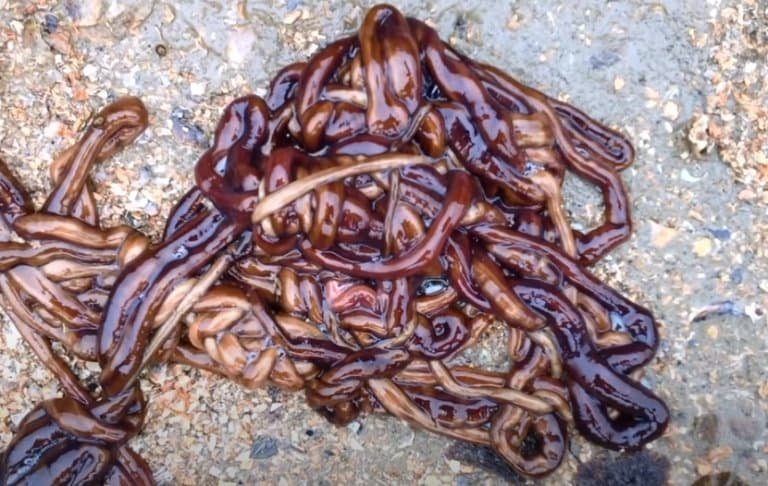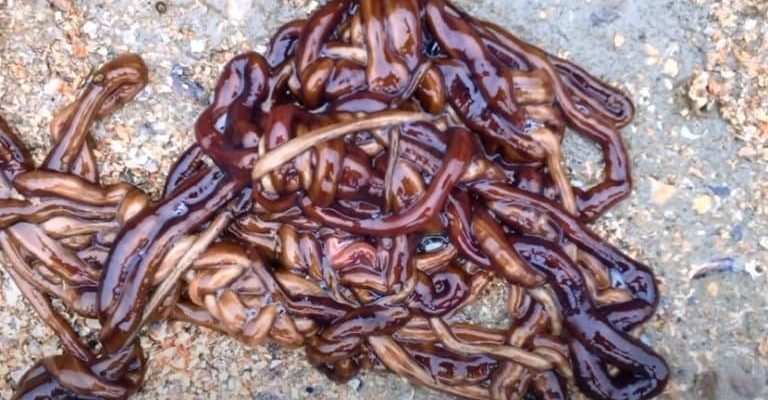
So, what’s the deal with bootlace worms? Imagine them as the stealthy predators of the ocean floor, lurking between seaweed or buried in the sand. They use their unique hunting techniques to catch their prey, and finding out how they do this can open your eyes to the complexities of marine life. In this article, we’re diving into the fascinating world of bootlace worms, exploring their predation methods, and understanding their role in the ecosystem.
What Are Bootlace Worms?
Bootlace worms, or *Lineus longissimus*, are some of the longest creatures on Earth, stretching up to 55 meters in length. You might think of them as the gentle giants of the marine world, but don’t let their size fool you. These worms are part of the phylum **Nemertea**, which means they have some unique characteristics that enable them to thrive in their habitats.
These worms are typically found in shallow waters along coastlines, often hiding in seaweed or the sand. Their bodies are sleek and elongated, resembling a bootlace, hence their name. They’re not just long; they can also be brightly colored, displaying hues of yellow, pink, or green. This vibrant appearance can often confuse potential predators, making them less appealing to those considering a meal.
One interesting aspect of bootlace worms is their ability to regenerate. If they lose a part of their body—whether due to accident or predator attack—they can regenerate it over time. This is a remarkable trait that enhances their survival in a world full of threats, including fellow predators.
How Bootlace Worms Hunt
Bootlace worms are fascinating hunters, employing some unique techniques to snag their meals. They mainly feed on small **crustaceans**, like shrimp and crabs, as well as other **invertebrates**, which include soft-bodied creatures like worms and even some mollusks. Their hunting strategy is both fascinating and effective, designed to take advantage of their environment.
First, bootlace worms have a specialized feature called a **proboscis**, which is like a long, sticky tongue. When they sense prey nearby, they can extend this proboscis quickly to catch unsuspecting creatures. You might picture it like a snake striking at its prey, but even quicker and with more precision. The proboscis has a sort of glue that helps it stick to whatever it captures, making it difficult for the prey to escape.
Another hunting method involves the bootlace worm lying still and blending in with its surroundings. Imagine being a predator who is waiting quietly for your next meal. When a crustacean swims too close, the worm can spring into action, using its speed to ensnare the creature in a matter of seconds. This technique shows just how adaptable bootlace worms can be in their pursuit of food.
The Role of Bootlace Worms in the Ecosystem
Bootlace worms may seem mysterious, but they play a crucial role in their ecosystem. By preying on crustaceans and other invertebrates, they help maintain the balance of marine life. Too many crustaceans can lead to overgrazing of plant life, which, in turn, can disrupt the entire underwater ecosystem.
Their predatory behavior also provides food for larger predators, such as fish and seabirds. It’s like they are part of a never-ending food chain, where every creature has a role to play. By keeping populations of crustaceans in check, bootlace worms contribute to the health of their environment and ensure that marine ecosystems remain robust and diverse.
You might be wondering how bootlace worms affect other marine creatures. Well, their presence is a sign that the ecosystem is functioning well. A diverse range of marine life supports healthier coral reefs, seagrass beds, and other habitats. So, you could say that bootlace worms are unsung heroes of the ocean, quietly ensuring everything stays in balance.
Adaptations for Survival
Bootlace worms have developed several adaptations that help them survive in their underwater world. As we’ve mentioned, their ability to regenerate body parts is a significant advantage, but there’s so much more to it than that.
One of the most essential adaptations is their **camouflaging** ability. Their colors can blend with their surroundings, making it hard for both predators and prey to spot them. Think of them as nature’s ninjas, hiding in plain sight. This ability not only helps them ambush their prey but also protects them from being eaten by larger fish or other predators.
Furthermore, bootlace worms possess a unique way of moving through the water. Instead of swimming like fish, they often crawl along the ocean floor or swim in a slow, undulating motion, making them less detectable by their prey. This stealthy movement combined with their camouflage allows them to sneak up on unsuspecting crustaceans, ensuring they can secure a meal without much fuss.
Threats Facing Bootlace Worms
Despite their unique adaptations, bootlace worms face several threats. Habitat destruction, pollution, and climate change are significant challenges for these fascinating creatures. As ocean temperatures rise and water quality declines, the delicate balance of the marine ecosystem is at risk, impacting bootlace worms and their prey.
Additionally, overfishing can decrease the populations of crustaceans and other invertebrates that bootlace worms rely on for food. If their prey becomes scarce, these worms may struggle to survive and reproduce, leading to a decline in their populations. It’s a harsh reminder that every creature in the ocean is interconnected. The health of one species can significantly influence another.
Another threat is the rising acidity of ocean waters due to climate change. As the oceans absorb more carbon dioxide, the water becomes more acidic, affecting marine life, including crustaceans that bootlace worms feed on. An imbalance in the food web can have cascading effects on the entire ecosystem.
In summary, bootlace worms are fascinating creatures that play a vital role in the marine ecosystem. From their impressive hunting techniques to their connection with crustaceans and other invertebrates, these worms demonstrate the complexity of underwater life. By understanding their predation habits and the challenges they face, we can better appreciate the delicate balance of ocean ecosystems.
Protecting these environments is crucial not just for bootlace worms, but for all marine life. As we continue to learn about these incredible creatures, we also remind ourselves of the importance of preserving the beautiful, mysterious world beneath the waves. Each tiny part, including bootlace worms, matters more than we might realize.

